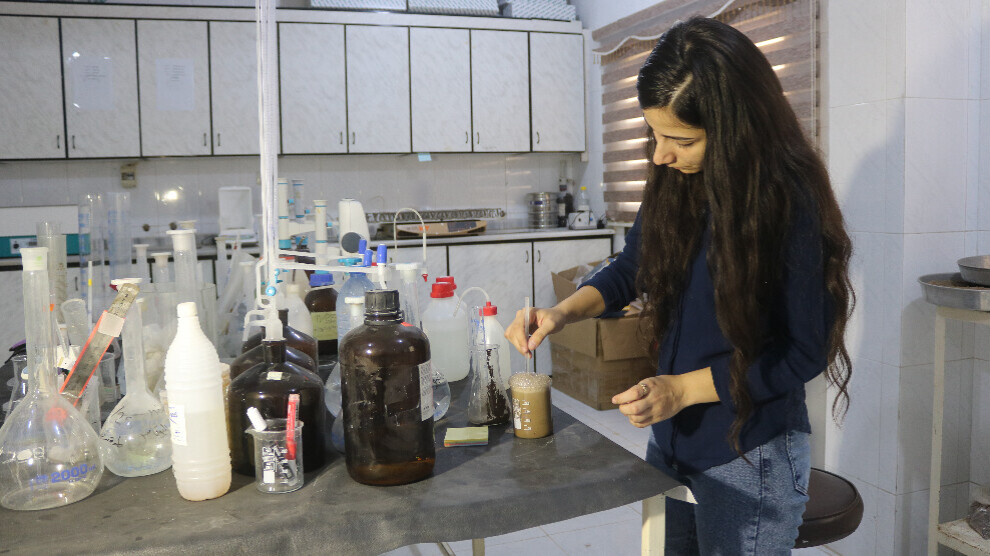Soil and Water Analysis Laboratory supports farmers
The Soil and Water Analysis Laboratory opened in Qamishlo by the Agricultural Research Center provides solutions to the problems of farmers by analyzing soil and water samples.

EBÎR MUHAMED
Qamishlo- The use of chemical fertilizers leads to harmful impacts on the environment such as soil salinity, heavy metal accumulation, eutrophication, accumulation of nitrate, greenhouse effect and biomagnification. Analysis is required to understand the problems in natural resources such as soil, water and plants.
The Agricultural Research Center opened the Soil and Water Analysis Laboratory in the city of Qamishlo to support farmers by analyzing soil and water samples. NuJINHA spoke to Bêrîvan Mihemed, a biologist and Co-chair of the center, about the activities of the laboratory.
‘It aims to find solutions to the problems faced by farmers’
“We work to support farmers and protect agricultural lands,” she said. “The laboratory started its work at the beginning of this month. We want to support farmers because chemical fertilizers are expensive. At the laboratory, we conduct soil tests to measure the calcium, magnesium and potassium in the soil. In addition, we conduct water tests to determine the presence of chlorine and bicarbonate in water. Many farmers do not know how to take water and soil samples. For this reason, we organize workshops to teach them how to take samples.”
Key steps to take samples
Bêrîvan Mihemed told us how farmers could take samples as follows: “In winter, they should take samples in 30 cm soil depth and 90 cm soil depth in summer. Then, these samples are mixed and two kilos of samples are sent to the laboratory for analysis. In order to take water samples, farmers should hold water for at least half an hour and then take samples.
Correct analysis brings successful solutions
“Correct analysis always brings successful solutions,” Bêrîvan Mihemed said. “There are many types of soil that do not need a lot of fertilizer or do not have the energy to protect themselves from chemical fertilizer. Farmers should first understand what soil needs.”
